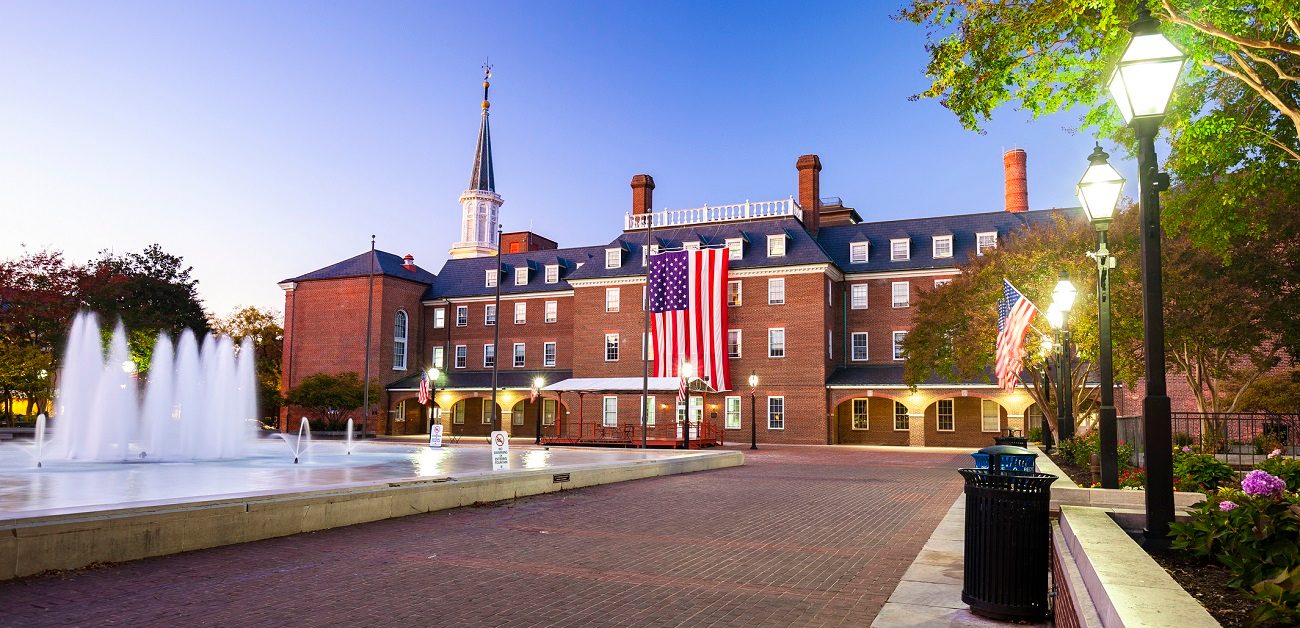
Sure, it’s become a corporate buzzword. But your actions can help owners save money and conserve resources, and give your business an edge.
After paring gasoline use with the purchase of two electric vehicles, Christopher Matos-Rogers, a former marine biologist, and husband Heroildo, a database architect, took a deeper dive into sustainability. They purchased a mid-century modern house in Atlanta and transformed it into an efficient electric home (a home that uses no or significantly less power from the grid). The work was guided by EarthCraft, a residential green building program in Georgia.
Soon after embarking on this path, Matos-Rogers, GREEN, AHWD, decided to earn his real estate license. He saw it as an opportunity since few salespeople in his market focused on sustainability. His Coldwell Banker Realty team raises awareness of sustainability’s merits. (Hear Matos-Rogers’ story on the Drive With NAR podcast.)
“We now have 50,000 properties in Georgia with some level of green certification. We have seen particular growth in homes with solar, thanks to [power company] incentives,” says Matos-Rogers, 2021 recipient of an EverGreen Award from the Green REsource Council, which confers the National Association of REALTORS®’ GREEN designation. “While market inventory has been down by 50% over the last two years, the number of homes with solar for sale in our MLS has increased by more than 50% during the same time.”
As concerns mount regarding climate risk, depletion of natural resources, and higher energy bills, a small but growing number of real estate professionals are seeking sustainable solutions.
Still a Nascent Effort
Eric Rehling, GREEN, a broker with RE/MAX Ready in Conshohocken, Penn., became interested in sustainability 10 years ago because of his young daughters. Once educated, he was ready to explain to home buyers the true cost of homeownership. “It isn’t just about the down payment, taxes, and mortgage, but what comes after when they pay for heat, air conditioning, or a well or public sewer,” he says. “A high-performance house (tight and well insulated) might cut costs 30 percent,” he adds.
After Nashville, Tenn.–based architect Betsy Littrell earned a real estate license and the GREEN designation, she and her contractor husband Austin started Maypop Building Workshop, a company focused on sustainable architecture and construction.
“We wanted to construct environmentally conscious houses with plant-based materials so they’d be a tool to combat climate change,” she says. “We also wanted to help clients optimize their investment in healthy homes.”
Scottsdale, Ariz., pro Jan Green teaches fellow agents and homeowners about ways to pare costs and save resources. She also specializes in selling high-performance homes, like this Pearl Gold–certified house. (Pearl Certification was a National Association of REALTORS® REACH technology accelerator participant in 2017.)
Jan Green, SFR, GREEN, a salesperson at HomeSmart in Scottsdale, Ariz., took yet another path to bring knowledge about sustainability to her market. As an instructor for her local REALTOR® association, she has taught colleagues and homeowners about energy efficiency. She refers them to companies that perform audits to pare utility bills, save water, and improve indoor air quality.
Despite the high value these practitioners and others place on energy efficiency and sustainability, only about 3,100 of NAR’s members have earned the GREEN designation.
Finding the time can be a challenge, particularly now when finding inventory has become tougher. “It’s one of those things you have to make the time for,” says Melisa Camp, ABR, GREEN, a salesperson with HomeSmart in Phoenix. She did so a decade ago, despite having a newborn. “I wanted the core knowledge to gain credibility and build my business,” she says.
Overall, buyers’ interest has also been slow to ramp up, lagging behind “‘location, location, location’ as the main reason to buy one house versus another,” says John Rosshirt, CRS, GREEN, C2EX, associate broker and co-owner of Stanberry, REALTORS®, in Austin, Texas.
But proponents are laying the groundwork. The state of California passed a voluntary building code more than a decade ago, dubbed “CALGreen,” encompassing planning, design, operation, construction, use, and occupancy regulations and guidelines. Since then, the state has added mandatory provisions, and several other states and localities have adopted green codes.
Christopher Matos-Rogers and Jan Green discuss the growing demand for eco-friendly housing and how to sell their benefits beyond the environmental aspect in an episode of the Drive With NAR podcast.
“We see a shift, particularly among prior homeowners and millennials. Buyers will pay a premium if they see there is long-term value,” Rosshirt says.
Add to that a 3%–5% sales price differential as more appraisers learn to value houses with energy-efficient and sustaining features, says Punta Gorda, Fla.–based practitioner and certified residential appraiser Sandra K. Adomatis, GREEN.
John Shipman, an agent with Barraza Group, Surterre Properties, in Laguna Beach, Calif., and manager of professional development, workforce education, and training programs at the Port Washington, Wis.–based Franklin Energy, thinks the knowledge that improved air quality increases homeowners’ health and comfort trumps all reasons for the growth in sustainability.
How to Seed the Conversation
Before broaching the topic of sustainability with clients, Shipman listens or looks for clues. “Maybe they have an electric vehicle,” he says. “Once we start talking, I listen and answer their questions.”
Architect Nate Kipnis used features such as cement fiberboard siding atop a rainscreen system, reclaimed wood, a no-grass front lawn, and a solar PV panel array on the garage for this Chicago project.
Craig Foley, AHWD, GREEN, chief sustainability officer for LAER Realty Partners in Melrose, Mass., and founder of Sustainable Real Estate Consulting Services, suggests asking, “What did you hate about your past home?”
Another first step: Advise buyers to have a utility company or independent expert perform an energy audit to assess the home’s condition and the return on investment of each potential fix. Some utilities don’t charge for this service since decreased use puts less strain on a local grid, Foley says. Jan Green suggests doing this as part of a home inspection and wrapping improvements into the mortgage.
If a number of changes are to be made, owners should proceed in a proper order according to a master plan. If they’re replacing a roof, for example, they might first install skylights for light and ventilation, prewire for solar panels, add a battery backup, and check if the electrical amp rating can service the load and, if not, add more, says Nate Kipnis of Kipnis Architecture + Planning in Evanston, Ill.
Buyers might start with the simplest, affordable changes—low-hanging fruit such as LED lights, which have fallen in price from as high as $80 apiece in 2008 to $1.50 today, Kipnis says.
Other easy changes are recycling, composting, smart thermostats, and Energy Star–rated appliances, says Rehling. Camp, a 2011 EverGreen award recipient, suggests buying a $5 can of foam insulation to spray into easy places, installing rain barrels to collect water, and adding low-flow faucets. “Reduce demand so you don’t need as much renewable energy,” she says.
Adomatis put a timer on her electric water heater, which helped lower her monthly bill by $20. Matos-Rogers replaced a gas range he loved with an induction cooktop. Once-pricey solar panels have dropped from $6.44 per watt in 2012 to $2.22 now, Kipnis says.
Last on a homeowner’s to-do list might be big-ticket items such as energy-efficient windows. “They’re one of the most expensive upgrades and take a long time for a payback,” Adomatis says. Foley agrees, and prefers the lower-cost alternatives of air sealing and insulation.
The bottom line, Camp says, is “nothing else matters if we don’t figure out the sustainable piece. You can have cool cars, but they’re not worth anything if we don’t have a habitable planet.”
3 Ways to Earn Your Sustainability Creds
Get a GREEN designation.
It’s the National Association of REALTORS®’ coursework on energy-efficient systems and sustainability, says John Rosshirt.
Jan Green earned her designation after attending an NAR convention and learning how one broker lowered her carbon footprint. She replicated that colleague’s business model and developed a website to list area providers of green services. “Any time you lower the carbon footprint, it benefits everyone,” she says. She went on to add to her area multiple listing service 65-plus green features that show what sustainable features a house includes, such as solar power, a tankless water heater, and low- or no-VOC paints. (Listen to Green’s story on the Drive With NAR podcast.)
When architect Nate Kipnis opened an office in Boulder, Colo., he researched which real estate sales pros had a GREEN designation. “I called to meet and share that I was available,” he says.
Connect with experts.
There are countless ways to test the waters. Green has attended home shows and conferences, volunteers with the U.S. Green Building Council, and is a member of the Arizona Green Chamber of Commerce. Betsy Littrell participates in conferences on high-performing houses including one in Nashville that NAR and the National Association of Home Builders co-promoted on social media with a tour of a high-performance house her firm had designed. The Appraisal Institute has a registry of appraisers who have taken its coursework to value sustainable buildings. RESNET—the Residential Energy Services Network—provides information to gauge a home’s energy efficiency. Earth Advantage has a green building registry at which users can check properties by address to see if they are certified as green or energy-efficient. Also, green lenders share how to finance sustainable projects; the NAHB offers a national green building certificate; and, in about 20 states, Pearl Certification documents a home’s high-performance features when a house is listed.
Live it.
One of the best ways to gain credibility is to live your own sustainable story so that you can give clients a first-hand view of the costs and savings and the sheer joy of a lifestyle that benefits others and the planet.
Carl Lantz, AHWD, a salesperson with Coldwell Banker Realty in West Hartford, Conn., and his wife post photos on social media of their now all-electric, 100-year-old house with solar panels, a more efficient boiler, new windows, and insulation. “The sustainability payback is a long-term investment, but solar has already paid us back,” he says,. His January 2022 bill was one-half the previous month; February was one-third of it; and, in March, the cost fell to zero. “The personal experience holds weight with clients,” says Lantz.
Green improved her 1979 house so it met net-zero criteria, using spray foam insulation, sealed ducts and registers, LED lights, EnergyStar appliances, a 16-SEER HVAC system, and solar panels, which also power her electric vehicle. Eric Rehling’s nine-year-old colonial-style home includes a high-efficiency furnace, pellet stove, LED lights, and organic garden, whose yield feeds his family and others. A well is used to water the garden. Craig Foley embarked on a deep energy audit of his 1890s Victorian house, shifting from fossil fuel to electricity. He thinks it will prove a smart investment to lower costs, especially when he and his wife retire. And Shipman, a 2014 EverGreen winner, built a green-certified, all-electric accessory dwelling unit that he and his wife rent out. The income helps to pay for their son’s college costs.
 Barbara Ballinger – Barbara Ballinger is a freelance writer and the author of several books on real estate, architecture, and remodeling, including The Kitchen Bible: Designing the Perfect Culinary Space (Images Publishing, 2014). Barbara’s most recent book is The Garden Bible: Designing Your Perfect Outdoor Space, co-authored with Michael Glassman (Images, 2015).
Barbara Ballinger – Barbara Ballinger is a freelance writer and the author of several books on real estate, architecture, and remodeling, including The Kitchen Bible: Designing the Perfect Culinary Space (Images Publishing, 2014). Barbara’s most recent book is The Garden Bible: Designing Your Perfect Outdoor Space, co-authored with Michael Glassman (Images, 2015).























 Barbara Ballinger – Barbara Ballinger is a freelance writer and the author of several books on real estate, architecture, and remodeling, including The Kitchen Bible: Designing the Perfect Culinary Space (Images Publishing, 2014). Barbara’s most recent book is The Garden Bible: Designing Your Perfect Outdoor Space, co-authored with Michael Glassman (Images, 2015).
Barbara Ballinger – Barbara Ballinger is a freelance writer and the author of several books on real estate, architecture, and remodeling, including The Kitchen Bible: Designing the Perfect Culinary Space (Images Publishing, 2014). Barbara’s most recent book is The Garden Bible: Designing Your Perfect Outdoor Space, co-authored with Michael Glassman (Images, 2015).




 Lee Nelson – Lee Nelson is a freelance journalist from Illinois. She writes for several state REALTOR® association magazines along with LawnStarter.com and Nurse.org. She has written for Yahoo! Homes, MyMortgageInsider.com, and TheMortgageReports. Contact Lee at leenelson77@yahoo.com.
Lee Nelson – Lee Nelson is a freelance journalist from Illinois. She writes for several state REALTOR® association magazines along with LawnStarter.com and Nurse.org. She has written for Yahoo! Homes, MyMortgageInsider.com, and TheMortgageReports. Contact Lee at leenelson77@yahoo.com.